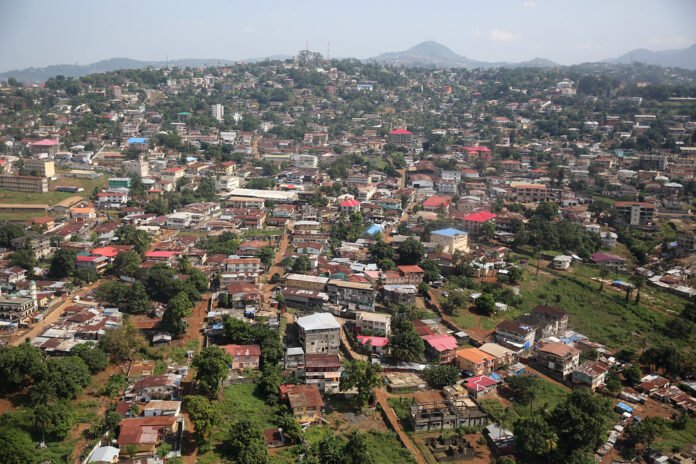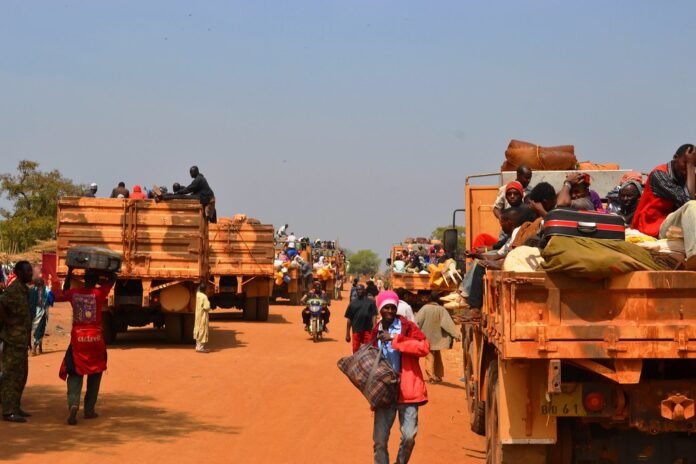Sierra Leone’s healthcare system is shaped by a combination of public and private health financing mechanisms, each with unique characteristics, target populations, and challenges. Both sectors aim to improve access to healthcare, yet they differ markedly in scope, coverage, funding, and accessibility.
Public Health Insurance: Broad but Limited
Public health insurance in Sierra Leone is centered on government-led initiatives such as the Free Healthcare Initiative (FHCI) and the overarching Universal Health Coverage (UHC) framework. FHCI, launched in 2010, offers free care for pregnant women, lactating mothers, and children under five. Meanwhile, UHC serves as a national vision to provide equitable, essential healthcare for all without financial hardship. These programs are largely funded by the government and international donors such as the Global Fund and the UK’s FCDO, making them critical yet donor-dependent.
Another key public scheme under development is the Social Health Insurance Scheme, intended to provide risk-pooling mechanisms and reduce out-of-pocket (OOP) payments. However, it remains in the planning stages, facing implementation challenges and limited coverage. Public health service delivery operates through a three-tier system—primary, secondary, and tertiary care—providing broad geographic reach but suffering from underfunding, staff shortages, and infrastructure gaps.
Private Health Insurance: Targeted and Limited in Reach
In contrast, private health insurance in Sierra Leone caters mostly to the formal employment sector, expatriates, and higher-income individuals. A few private insurance companies operate in the country, offering inpatient and outpatient services, usually with limited coverage. Some larger employers and NGOs provide employer-sponsored health insurance for staff, but such plans vary significantly in quality and scope.
Out-of-pocket payments remain the dominant private financing method, contributing nearly 45% of total health expenditure. This reliance often leads to catastrophic health spending, particularly for low-income households. Additionally, international health insurance plans serve expatriates and high-income locals, offering access to private care abroad, including medical evacuation. Emerging micro-insurance initiatives and insurance brokers are trying to bridge the gap for informal workers, but these remain underdeveloped and small-scale.
Key Similarities and Differences
Both public and private systems aim to enhance healthcare access and quality, yet they diverge in several ways:
- Coverage and Target Population: Public insurance targets vulnerable and underserved groups, while private insurance is skewed toward formal workers and expatriates.
- Funding Source: Public schemes are mainly donor- and government-funded; private insurance relies on individual or employer contributions.
- Accessibility: Public services are widespread but often of lower quality; private services are limited in scale but may offer better amenities.
- Sustainability: Public programs face long-term sustainability concerns due to donor reliance; private schemes struggle with affordability and low market penetration.
Top Public Health Insurance Programs in Sierra Leone
Sierra Leone’s public health insurance infrastructure is still in development, and as of 2025, it is characterized by a single national scheme and complementary public health programs rather than a variety of distinct public insurance options. The cornerstone of Sierra Leone’s health financing system is the National Health Insurance Scheme (NHIS), which was officially launched in 2019 under the National Social Security and Insurance Trust (NASSIT). In addition, a number of publicly funded health initiatives provide targeted coverage for specific groups. While there are not five distinct public health insurance plans, this section highlights the NHIS and the main supplementary public programs funded and operated by the government.
1. National Health Insurance Scheme (NHIS)(Official Website: https://www.nassit.org.sl/nhis)
- Cost:
Contributions are income-based. Formal sector employees contribute around 5% of their gross monthly earnings, while employers contribute another 5%. For informal sector workers and self-employed individuals, a flat-rate monthly fee has been introduced, adjusted based on income estimates. - Available Services/Coverage Features:
The NHIS aims to provide essential health services including outpatient care, inpatient treatment, maternal and child health services, basic diagnostics, and selected surgeries. It prioritizes services at government-run facilities and certain accredited mission hospitals. - Open for All or Limited:
The NHIS is open to all citizens, including informal workers, the self-employed, and vulnerable populations. Registration drives are being carried out across the country, but rural and remote areas still face enrollment challenges. - Core Financial Features:
NHIS pools contributions nationally and negotiates service fees with providers. Co-payments are either minimal or waived for low-income beneficiaries. The scheme is designed to reduce out-of-pocket expenditures, which have historically been a major barrier to access. - Consumer Satisfaction Score:
Based on government and independent NGO surveys, the NHIS earns a consumer satisfaction score of around 65/100. Beneficiaries appreciate improved affordability and reduced wait times in some regions. However, challenges like drug stockouts and occasional facility overcrowding persist.
2. Free Health Care Initiative (FHCI)(Official Website: https://mohs.gov.sl/fhci)
- Cost:
Fully funded by the government and international donors; no cost to beneficiaries. - Available Services/Coverage Features:
Offers free healthcare services to pregnant women, lactating mothers, and children under five. It covers antenatal and postnatal care, deliveries, vaccinations, malaria treatment, and common childhood illnesses. - Open for All or Limited:
Limited to specific groups — children under five, pregnant women, and lactating mothers. - Core Financial Features:
No premiums or co-payments; all costs are absorbed by the state and donor partners like DFID and UNICEF. - Consumer Satisfaction Score:
Estimated satisfaction rating is 75/100. Beneficiaries often report gratitude for the program, although quality and supply issues in remote clinics can affect overall perception.
3. Military and Police Medical Services
- Cost:
No direct costs for members of the armed forces and police services. Funded through government allocations. - Available Services/Coverage Features:
Includes primary care, emergency care, and limited hospitalization services at military and police clinics and hospitals. - Open for All or Limited:
Limited to active personnel and their immediate families. - Core Financial Features:
Fully subsidized by the government; users do not pay for services rendered within the designated health facilities. - Consumer Satisfaction Score:
Estimated at 70/100, though data is limited. Satisfaction varies based on facility and region.
Top Private Health Insurance Providers in Sierra Leone
Private health insurance in Sierra Leone is limited, with only a small number of licensed insurers offering medical coverage. Most private health plans are used by expatriates, employees of large multinational corporations, or affluent Sierra Leoneans in urban centers such as Freetown. These insurance providers often partner with private clinics or international hospitals, and their services typically include premium offerings not available through the public system. While Sierra Leone has only a few private health insurance providers, the ones listed below are the most notable and widely used.
1. Activa International Insurance (Sierra Leone)(Official Website: https://sierraleone.group-activa.com/)
- Cost:
Premiums vary based on plan tiers and coverage levels, typically starting from $200–$1,000 USD annually for basic individual plans and rising substantially for international coverage options. - Available Services/Coverage Features:
Offers comprehensive health coverage, including outpatient services, inpatient care, specialist consultations, maternity care, diagnostics, and evacuation for medical emergencies. International coverage is available on premium plans. - Open for All or Limited:
Open to all, but most clients are corporate clients, NGOs, and high-income individuals. - Core Financial Features:
Premiums are annual and can be paid in quarterly or biannual installments. Some plans include deductibles or co-payments. Reimbursement for out-of-network services is available under select plans. - Consumer Satisfaction Score:
Estimated at 80/100. Clients report high satisfaction with customer service and ease of access to care, though rural accessibility remains limited.
2. Medical Services Insurance (MSI) by RITCORP(Official Website: https://www.ritcorpltd.com/medical-health-plan.html)
- Cost:
Premiums range from $150 to $900 USD annually, depending on age, health status, and selected package. - Available Services/Coverage Features:
Covers general and specialist consultations, diagnostic tests, prescriptions, inpatient and outpatient care, and limited surgical procedures. Some plans include emergency transport services. - Open for All or Limited:
Open to individuals, families, and corporate clients. - Core Financial Features:
Offers flexible payment plans and tiered packages. Policyholders can choose plans with co-pays to reduce premiums. - Consumer Satisfaction Score:
Estimated at 75/100. Users value its affordability and flexibility, though some report delays in claims processing.
3. Staco Insurance Company(Official Website: https://stacoinsurancesl.com/)
- Cost:
Individual plans start at approximately $120 USD per year, while corporate health packages are tailored per company agreements. - Available Services/Coverage Features:
Offers basic health insurance including outpatient services, doctor consultations, medication, and selected hospitalization coverage. Plans typically focus on coverage within Sierra Leone. - Open for All or Limited:
Primarily open to corporate clients; limited offerings for individuals. - Core Financial Features:
Premiums are calculated annually; claim limits and exclusions apply. Lower-tier plans may require full payment up front for services with later reimbursement. - Consumer Satisfaction Score:
Estimated at 70/100. Affordable option for companies, but not widely available for individuals.
4. International SOS (via corporate partnerships)(Official Website: https://www.internationalsos.com/)
- Cost:
Only available through corporate subscription plans. Premiums are negotiated per employee, typically $1,000+ USD per annum for international-grade coverage. - Available Services/Coverage Features:
Includes 24/7 international medical assistance, medical evacuations, doctor access, health monitoring, and travel risk services. It’s more of a global health access and support service than a traditional local insurance. - Open for All or Limited:
Limited to expatriates and employees of multinational corporations. - Core Financial Features:
Fully funded by employers in most cases. Benefits include international evacuations and direct access to care without reimbursement hassles. - Consumer Satisfaction Score:
85/100, particularly praised for rapid response and high-standard international services.
READ MORE: Private and public health insurance of Madagascar (Make informed choices)


